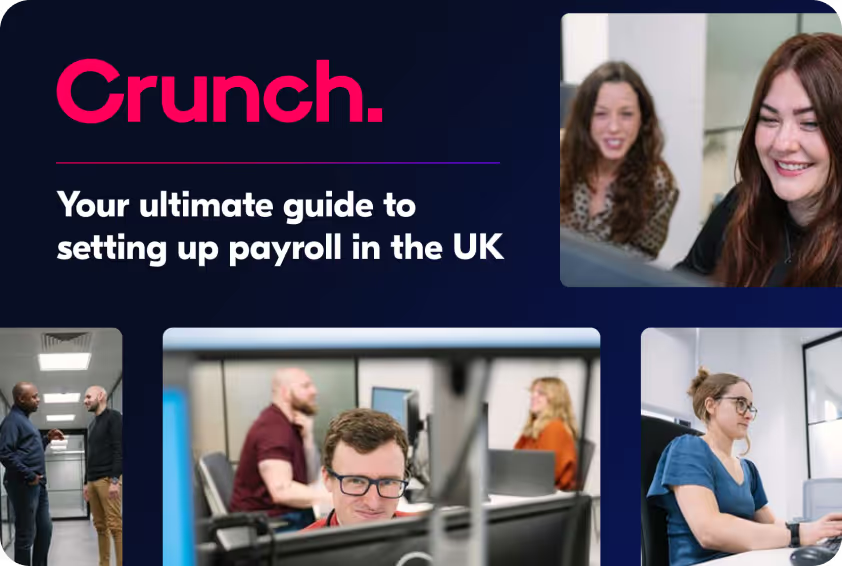If you’re a construction subcontractor living and working in the UK, we’ve got some good news for you: you may be entitled to reclaim money withheld under the Construction Industry Scheme (CIS).
Contrary to popular belief, CIS deductions suffered are not technically taxes. They are monies withheld pending an outcome. When tax returns are filed, any CIS deductions are first applied to your tax liabilities. Any difference between the deductions and tax liabilities will either result in a refund from HMRC or an additional payment due to HMRC.
You can also reclaim a wide range of business expenses against the deductions that your contractor made from your pay.
In this article, we'll walk you through what the CIS is, who is eligible to claim for a CIS deduction refund, and the steps you’ll need to take to make it happen. Let’s start with the basics:
What is the Construction Industry Scheme?
The CIS is a deduction scheme specific to the construction industry in the UK. It applies to both contractors and subcontractors working within this sector.
Under the CIS, contractors are required to deduct the following from a subcontractor's payments to cover their tax and National Insurance contributions (NICs):
- If the subcontractor is registered for the CIS: 20% deduction
- If the subcontractor isn’t registered for the CIS: 30% deduction
This means that subcontractors registered under the CIS can claim a refund if the deductions they have suffered is greater than the National Insurance or Income tax due. If that sounds like you, here’s how to go about claiming your CIS deductions refund:
1. Check your eligibility:
Before you start your claim for a CIS deductions refund, ensure that you are definitely eligible for one. To qualify, you must be a subcontractor registered under CIS, and your tax liability for the year must be lower than the amount deducted by your contractors.
The CIS covers most construction projects involving a permanent or temporary building or structure, or civil engineering works (like roads and bridges), but be aware that some jobs are exempt from the CIS, including carpet fitting, providing scaffolding hire (but no labour), surveying properties and delivering building materials.
If you do meet the requirements, you’ll also need to have filed all necessary tax returns throughout the year and met all your filing obligations to HMRC to be eligible for your CIS refund.
If you’re not sure whether or not you qualify, we’d advise speaking to a tax advisor, who will be able to help you determine your eligibility - and also help you to prepare for and handle your claim.
You can also check out our recent article on who the CIS applies to and how to operate it as a limited company or sole trader.
2. Prepare all the necessary documentation:
To claim your CIS refund, you’ll need the following documents:
- Jobseeker’s allowance documents (if claimed).
- CIS statements: These documents outline the payments and deductions made by your contractors throughout the tax year.
- Invoices and receipts: Keep a record of all the construction work you’ve carried out, including invoices issued and receipts for expenses related to your subcontracting activities.
- Payroll records: If you employ others, maintain accurate payroll records and include these in your CIS refund claim.
- Proof of identity: Make sure you’ve got valid identification documents to hand, such as your passport or driver's licence, as HMRC may ask to see them.
- PAYE P60 or P45 documents (if you’ve been employed).
3. Calculate the amount you’re owed:
Finally, review your CIS statements and compare them with your income and expense records. Calculate your tax liability for the year, considering any allowable deductions and expenses. If the amount deducted by your contractors is higher than your tax liability, you’re due a refund.
{{ltd-guide}}
How to submit your CIS refund claim
Once you’re sure you’re eligible for a CIS refund, follow these steps to claim it:
1. Complete your Self Assessment tax return:
Head to HMRC's online platform to get hold of the form you’ll need to claim your refund and any other necessary business expenses, such as business travel, equipment or accommodation costs for work.
We recommend seeking professional assistance to accurately complete the form, including the section for CIS refunds, as you’ll need to work out how much you’re due back first.
To fill out the form, you’ll need:
- Your company or business name
- UK address
- Phone number
- Any PAYE reference numbers
- Your UTR (unique tax reference)
- The amount of money you’ve overpaid
2. Provide the necessary documentation:
Once you’ve filled out the form, you’ll also need to attach your CIS statements, invoices, receipts - along with the other relevant documents we touched on earlier - to support your claim.
3. Double-check your submission:
Double-check your claim (and supporting documents) for accuracy and completeness before you submit it. Again, we recommend consulting a tax professional to help you make sure all the details are correct.
4. Submit your claim:
You can file your claim either online (through HMRC's website) or by post. Just make sure you plan ahead and meet the submission deadline for that year to avoid any penalties.
5. Dealing with inquiries from HMRC:
After you’ve made your CIS refund claim, HMRC may conduct checks or raise inquiries regarding your claim. Be ready to provide additional information or evidence if requested. Keeping and maintaining clear and organised records will help streamline this process and make it easy to respond to HMRC quickly.
If you’re uncertain about any aspect of HMRC’s inquiries, seek advice from a qualified tax professional.
You’re ready to make your claim
We hope that you now feel more confident about how to claim a CIS refund, and the steps you need to take to get started with your claim.
It’s important to seek professional advice to keep the process fast and smooth, and to help ensure you’re staying compliant with HMRC regulations.
By staying on top of your CIS earning records, business expenses and other statements of incomings and outgoings throughout the year, you’ll also be doing yourself a massive favour when the time comes to claim for your next CIS refund.
With that said, it’s time to start claiming the refund you’re legally entitled to, and continue to maximise your earnings as a successful subcontractor in the construction industry. Good luck!


.svg)

.svg)



.webp)





.avif)








